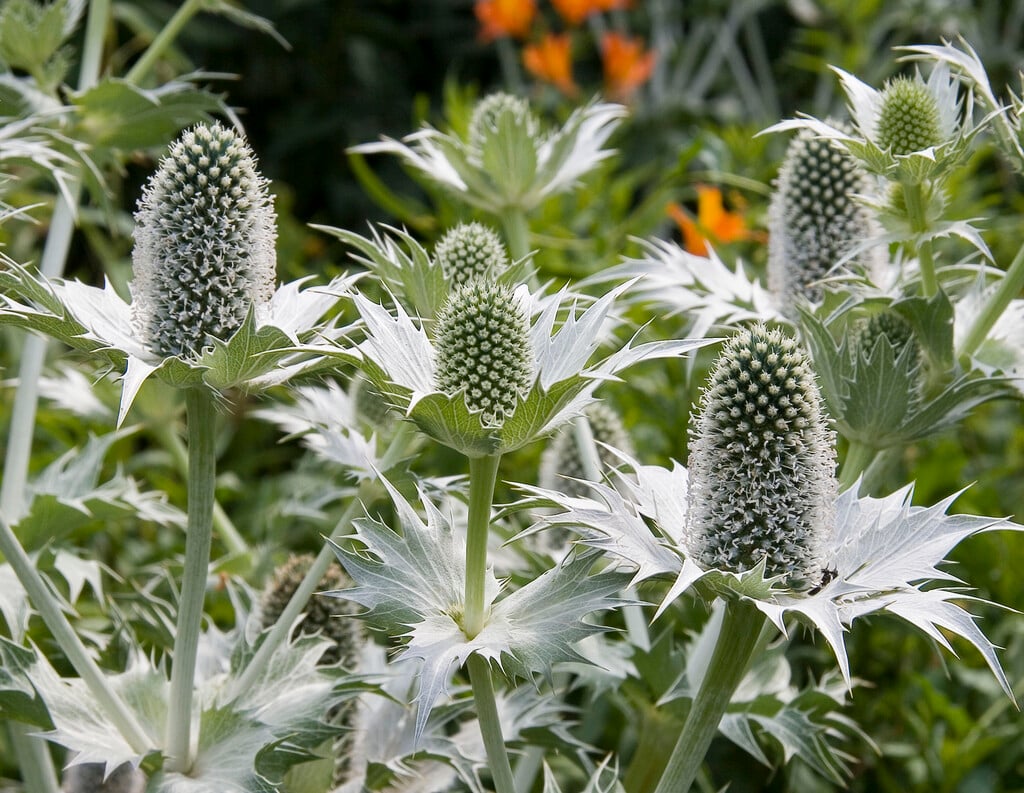Eryngium giganteum

Miss Willmott's ghost
A robust biennial or short-lived perennial forming a rosette of heart-shaped basal leaves, and spiny stem leaves, with cone-like umbels of tiny blue flowers sitting within a rosette of spiny silvery-grey bracts

Buy this plant
Size
Ultimate height
0.5–1 metresTime to ultimate height
2–5 yearsUltimate spread
0.1–0.5 metresGrowing conditions
Moisture
Well–drainedpH
Acid, Alkaline, NeutralColour & scent
| Stem | Flower | Foliage | Fruit | |
| Spring | Green | |||
|---|---|---|---|---|
| Summer | Blue Grey Silver | Green | ||
| Autumn | Green | |||
| Winter |
Position
- Full sun
Aspect
South–facing or East–facing
Exposure
Exposed or ShelteredDrought resistance
Yes Hardiness
H6Botanical details
- Family
- Apiaceae
- Native to GB / Ireland
- No
- Foliage
- Deciduous
- Habit
- Clump forming
- Genus
Eryngium can be annuals, biennials or perennials with simple or divided leaves, often spiny edged, and cone-like flower-heads often surrounded by an involucre of conspicuous spiny bracts
- Name status
Correct
- Plant range
- Caucasus, Turkey
How to grow
Cultivation
Grow in dry, well-drained, poor to moderately fertile soil in full sun. Protect from winter wet
Propagation
Propagate by seed. Sow seeds onto moist but well-drained peat-free seed compost and cover lightly with vermiculite. Keep at a temperature of between 18-22°C
Suggested planting locations and garden types
- Coastal
- Architectural
- City and courtyard gardens
- Cottage and informal garden
- Wildlife gardens
- Cut flowers
- Flower borders and beds
Pruning
Cut back after flowering
Pests
May be susceptible to leaf and bud eelworms, and slugs and snails
Diseases
May be susceptible to root rot and powdery mildews
Get involved
The Royal Horticultural Society is the UK’s leading gardening charity. We aim to enrich everyone’s life through plants, and make the UK a greener and more beautiful place.